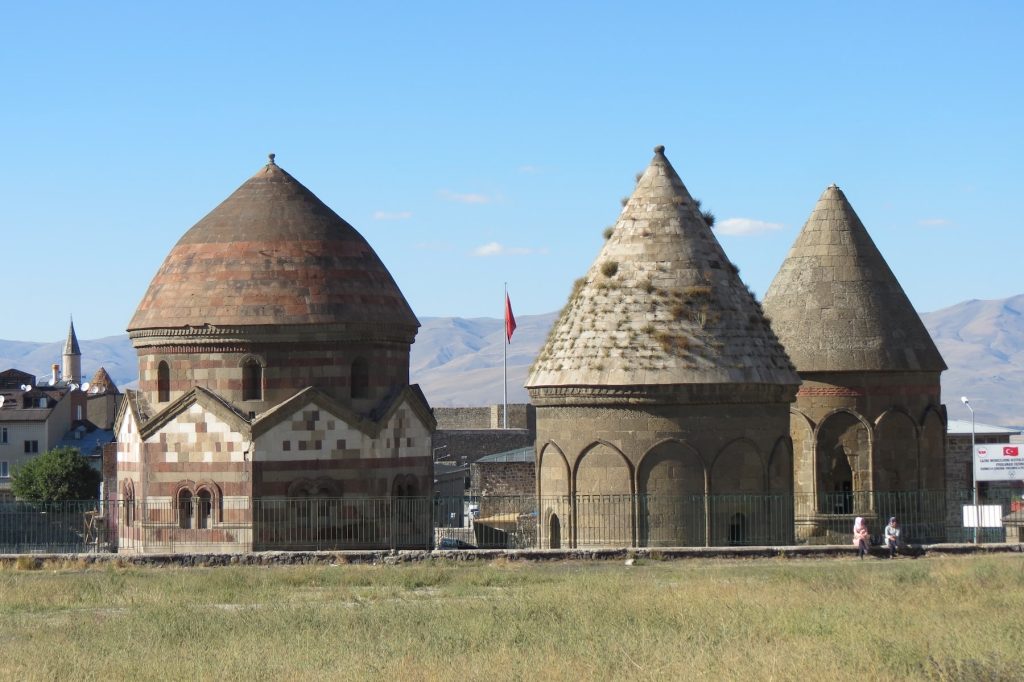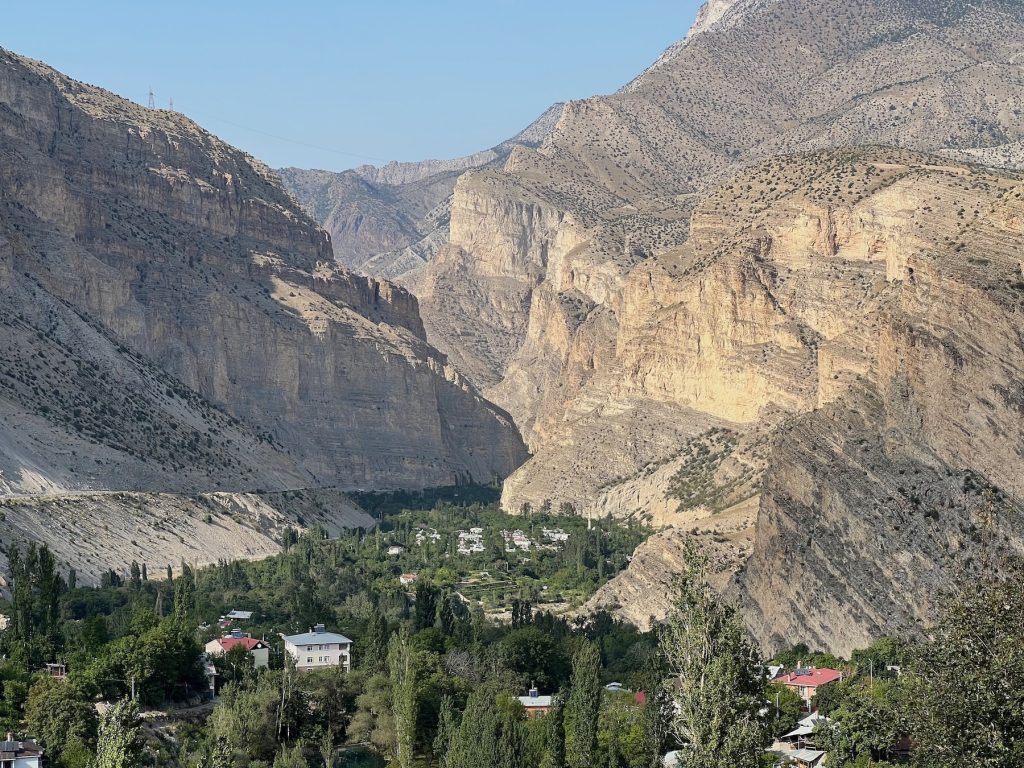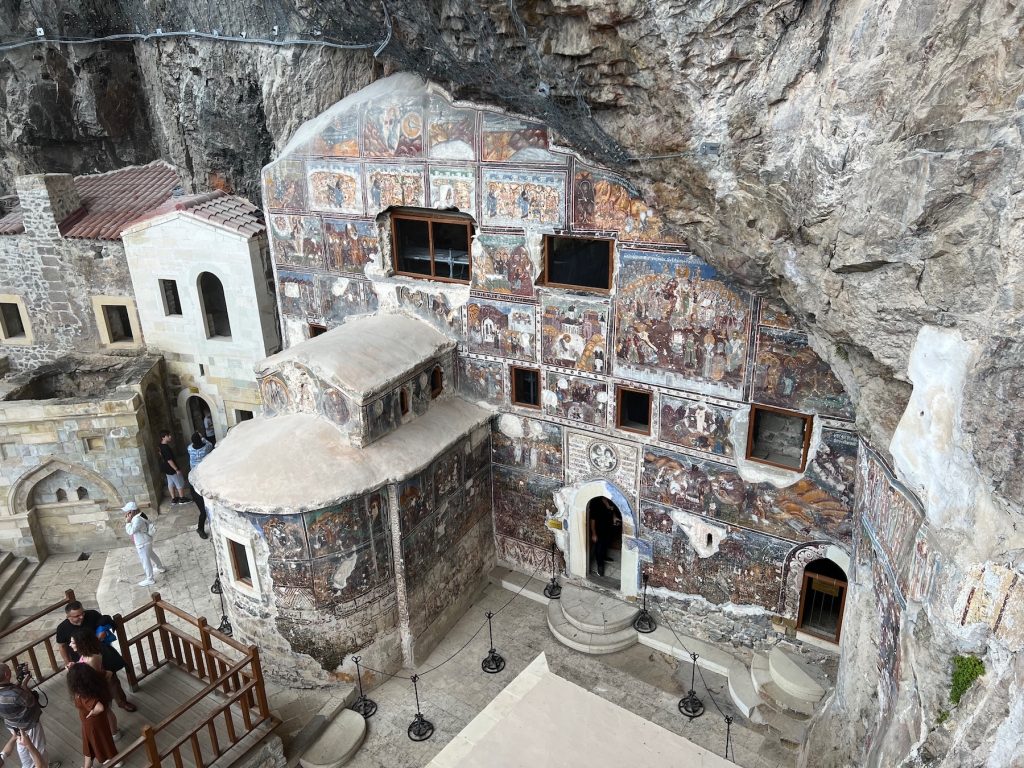
Small group tour of Northern Turkey
Small group tour of Northern Turkey
This 14-day journey traverses Turkey’s hidden northern heartland, from the capital Ankara to the rugged eastern highlands near the Georgian border. Beginning with ancient Anatolian treasures and Ottoman architectural gems in UNESCO-listed Safranbolu, the route winds through dramatic river valleys and mountain plateaus. You’ll discover the breathtaking cliff-side Sümela Monastery, explore the pristine alpine beauty of Ayder Yayla, and encounter remarkable medieval Georgian and Armenian churches that bear witness to this region’s rich Christian heritage. The itinerary culminates in historic Erzurum, offering an immersive experience of Turkey’s diverse cultural tapestry, stunning natural landscapes, and centuries of Anatolian, Byzantine, Ottoman, and Caucasian history rarely visited by conventional tours.
- The most complete tour of Northern Turkey!
- Visits all the main sights
- Airport transfers, meals & transfers included in the price
- Dozens of 5 star reviews from past guests
- 10 years of experience in running tours in Turkey
Tour features
- Small group travel: maximum group size is 14 guests.
- Fixed departure dates
- UNESCO World heritage sites
- Accompanied by a Tour manager throughout your journey
- Tour cost includes entrance fees to main sites/museums
- Private 17-seater minibus
- Safranbolu
- Amasya
- Ankara Museum of Anatolian Civilisations
- Sümela Monastery
- Kaçkar Mountains
- 2 nights in Ankara (classic room)
- 2 nights in Safranbolu(classic room)
- 2 nights in Amasya (classic room)
- 1 night in Trabzon (classic room)
- 2 nights in Ayder Yayla
- 2 nights in Artvin
- 2 nights in Erzurum
- All meals are included
- Arrival at Ankara airport
- Departure from Erzurum airport
- Transfers and pick-ups/drop-offs from/to the main airport of arrival on the day of arrival/departure of the tour are included
- Some walking involved – you should be able to walk 2 kilometres without difficulty.
- Stay in Istanbul, before your tour.
- Please note: this tour does not include Istanbul in the itinerary – however, we very much recommend that participants spend a night or two in Istanbul, either at the beginning or at the end of their stay. We can provide assistance in booking this.
Full Itinerary
Day 1
Arrival in Ankara
Arrival in Ankara and transfer to the hotel
Evening meal and overnight in Ankara.
Day 2
Ankara
Ankara is Turkey’s capital and second-largest city, located in the country’s central Anatolia region. A modern metropolis built around an ancient citadel, Ankara became the republic’s capital in 1923 under Atatürk. The city blends government institutions, universities, and contemporary development with historical sites, including Atatürk’s monumental mausoleum, Anıtkabir, and the historic Ankara Castle.
We begin with a visit to the Museum of Anatolian Civilizations: Turkey’s premier archaeological museum, housed in a restored Ottoman bazaar complex. This exceptional institution showcases artifacts spanning from the Paleolithic era through classical antiquity, featuring unparalleled Hittite collections, Neolithic treasures from Çatalhöyük, and Bronze Age masterpieces, offering a comprehensive journey through Anatolia’s rich ancient heritage.
In the afternoon we visit Anitkabir – the Mausoeum of Ataturk – and the castle area of the city.
Evening meal and overnight in Ankara.
Day 3
Safranbolu
We depart Ankara in the morning for a 3 hour journey to Safranbolu – a remarkably preserved Ottoman town in northern Turkey’s Karabük Province, designated a UNESCO World Heritage Site in 1994. Named after the saffron crocus once cultivated here, this enchanting town showcases traditional Turkish architecture through its hundreds of Ottoman-era houses, mosques, and bathhouses. The distinctive white-walled homes with timber frames and red-tiled roofs cascade down hillsides, creating a picturesque skyline. Once a vital caravan stop on major trade routes, Safranbolu flourished between the 13th and 20th centuries.
En route, we stop off at Tokatli Canyon and the İncekaya Byzantine aquaducts
Evening meal and overnight in Safranbolu.
Day 4
Full day in Safranbolu
This morning, we wander the cobblestone streets, explore artisan workshops, and experience authentic Turkish hospitality in converted historic houses, making it a living museum of Ottoman urban life.
In the afternoon we pay a visit to Yörük köyü, the more remote, miniature cousin of Safranbolu.
Evening meal and overnight in Safranbolu.
Day 5
Kastamonu
This morning we depart Safranbolu for the drive to Amasya. we punctuate the five hour drive with a stop at Kastamonu and visit to the Nasrullah Mosque.
Evening meal and overnight in Amasya
Day 6
Amasya
Today we dedicate the whole days to exploring Amasya: a stunning historical city nestled in a dramatic narrow valley where traditional Ottoman houses line the Yeşilırmak River beneath towering cliffs. Known as the “City of Princes,” Amasya served as a training ground for Ottoman heirs and boasts a rich history spanning Roman, Byzantine, and Ottoman periods. The city’s most striking features include ancient Pontic rock tombs carved into sheer cliff faces, a hilltop citadel offering panoramic views, and beautifully preserved Ottoman mansions reflected in the river waters. Famous for its apples and as the birthplace of the geographer Strabo, Amasya combines natural beauty with architectural heritage, creating an unforgettable atmosphere of timeless tranquility.
In addition, the water-course around Ferhat Dağı is said to be the inspiration of Nazim Hikmet’s play Ferhat and Şirin. You can read an article by Damian Croft about this legend on our blog.
Evening meal and overnight in Amasya
Day 7
Tokat
Today we have another long drive from Amasya to Trabzon via Tokat.
Evening meal and overnight in Trabzon
Day 8
Sümela Monastery
Sümela Monastery is a breathtaking Greek Orthodox monastery clinging to a sheer cliff face in the Pontic Mountains near Trabzon, Turkey. Founded in the 4th century and perched at 1,200 meters altitude, this spectacular complex features frescoed chapels, rock-carved chambers, and stunning views over the Altındere Valley, representing centuries of Byzantine monastic tradition.
Onward drive to the Ayder Yayla
Evening meal and overnight in the Ayder Yayla
Day 9
Ayder Yayla
Ayder Yayla is a breathtaking highland plateau in Turkey’s Rize Province, nestled in the verdant Kaçkar Mountains. Situated at approximately 1,350 meters altitude, this picturesque yayla (summer pasture) is renowned for its dramatic natural beauty, featuring cascading waterfalls, dense forests, and mist-shrouded peaks. The area offers natural hot springs believed to have therapeutic properties, traditional wooden chalets, and serves as a gateway for trekking into the rugged Kaçkar range. With its cool mountain climate, alpine meadows dotted with grazing cattle, and authentic highland culture, Ayder provides a refreshing escape from coastal humidity, attracting nature lovers, hikers, and those seeking tranquility amid spectacular scenery.
Evening meal and overnight in the Ayder Yayla
Day 10
Artvin
Drive from Ayder to Artvin via Hopa
Evening meal and overnight in Artvin.
Day 11
Georgian monasteries: Dolishana and Tbeti
The medieval Georgian Orthodox monasteries of Dolishana and Tbeti are remnants of the historic kingdom of Tao-Klarjeti.
Standing amid peaceful highland landscapes, Tbeti Cathedral, was founded by Bagratid prince Ashot Kukhi between 891 and 918. It became a significant cultural center producing hagiographical writings and becoming important for calligraphy and manuscript illumination.
Evening meal and overnight in Artvin
Day 12
The Georgian and Armenian churches of Yusufeli
Today allows us further exploration of some of the Georgian and Armenian churches of this corner of Turkey. Işhan, Öşkvank, Haho:
Işhan (whose name derives from the Armenian word for “prince” իշխան – ishkhan) was one of the important spiritual centers in medieval Tao-Klarjeti. The first church was built by the Armenian Catholicos Nerses III (641-661), a native of the village
Öşkvank is a Georgian Eastern Orthodox monastery built between 963 and 973, with its main church dedicated to St. John the Baptist. Sponsored by Georgian King Bagrat II and David III of Tao, it was a major center of Georgian literature and enlightenment during the Middle Ages and is considered one of the largest and architecturally most complex buildings in the Eastern Christian world. The church features a cruciform plan combining a basilica with a centralized dome, delicately hued yellow stone facades, blind arches, ornate sculptures including a recurring eagle clutching prey, and decayed frescoes.
Haho was founded in the second half of the 10th century by King David III Kurapalates between 976-1001 and became an important center of Georgian literature and culture. Now called Bağlar Başı, it’s one of the best preserved churches in the region.
(You can read more on these Georgian and Armenian monasteries on our blog post here).
Onward drive to Erzurum. Evening meal and overnight in Erzurum
Day 13
Full day exploration of Erzurum
Perched on a high plateau at 1,900 meters elevation, Erzurum is one of the country’s highest major cities. Founded as Theodosiopolis by the Byzantines, Erzurum has served as a strategic crossroads for centuries, evidenced by its impressive Seljuk and Ottoman monuments. The city is renowned for its distinctive architecture, including the twin-minaret: Çifte Minareli Medrese, the ancient Erzurum Castle, and beautifully decorated mosques.
Evening meal and overnight in Erzurum
Day 14













